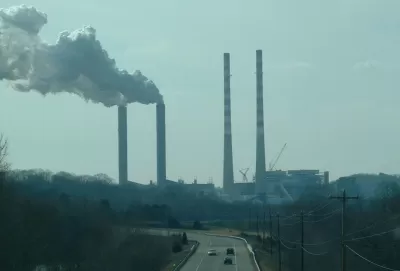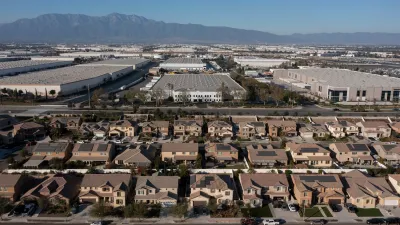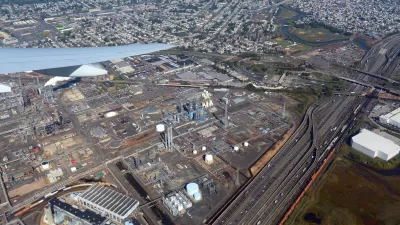Research shows racial disparities in exposure to air pollution as well as consumption of the goods and services that cause it.

A new study in the journal PNAS looks at the relationship between production and exposure of pollution by considering people’s consumption of goods and services, reports Jonathan Lambert:
After accounting for population size differences, whites experience about 17 percent less air pollution than they produce, through consumption, while blacks and Hispanics bear 56 and 63 percent more air pollution, respectively, than they cause by their consumption, according to the study.
The researchers had to link data about where pollution is located, where and how it is produced, what products and services are related to those emissions, and who consumes those things. "To do that, the researchers actually worked backwards, following consumer spending to different sectors of the economy, and then ultimately to the main emitters of air pollution," says Lambert.
The findings show that the inequalities stem from levels of consumption and not types of consumption, according to researcher Christopher Tessum. "He suggests continuing to strive to make economic activity and consumption less polluting could be a way to manage and lessen the inequities," notes Lambert.
FULL STORY: Study Finds Racial Gap Between Who Causes Air Pollution And Who Breathes It

Planetizen Federal Action Tracker
A weekly monitor of how Trump’s orders and actions are impacting planners and planning in America.

Map: Where Senate Republicans Want to Sell Your Public Lands
For public land advocates, the Senate Republicans’ proposal to sell millions of acres of public land in the West is “the biggest fight of their careers.”

Restaurant Patios Were a Pandemic Win — Why Were They so Hard to Keep?
Social distancing requirements and changes in travel patterns prompted cities to pilot new uses for street and sidewalk space. Then it got complicated.

Platform Pilsner: Vancouver Transit Agency Releases... a Beer?
TransLink will receive a portion of every sale of the four-pack.

Toronto Weighs Cheaper Transit, Parking Hikes for Major Events
Special event rates would take effect during large festivals, sports games and concerts to ‘discourage driving, manage congestion and free up space for transit.”

Berlin to Consider Car-Free Zone Larger Than Manhattan
The area bound by the 22-mile Ringbahn would still allow 12 uses of a private automobile per year per person, and several other exemptions.
Urban Design for Planners 1: Software Tools
This six-course series explores essential urban design concepts using open source software and equips planners with the tools they need to participate fully in the urban design process.
Planning for Universal Design
Learn the tools for implementing Universal Design in planning regulations.
Heyer Gruel & Associates PA
JM Goldson LLC
Custer County Colorado
City of Camden Redevelopment Agency
City of Astoria
Transportation Research & Education Center (TREC) at Portland State University
Camden Redevelopment Agency
City of Claremont
Municipality of Princeton (NJ)





























